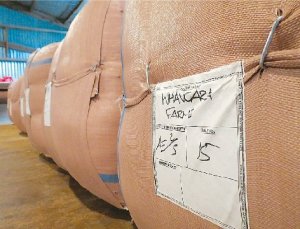Like most Maori farms, it is big – but by no means the biggest. At 7,100ha it carries 70,000 stock units, made up of 35,000 Coopworth/Romney ewes and 6000 cattle including 1,600 Angus breeding cows.
The farms are situated on SH35 about 30 minutes north of Gisborne and up the Ruakituri Valley north west of Wairoa. From the large and distinctive woolshed beside the highway you get beautiful views of the Pacific Ocean and to the west, serious hill country. It’s an attractive and beautiful property, and one that in the matter of just a few years has almost doubled its production.
The business is a partnership of two Maori Incorporations, Whangara B5 and Pakarae A, with 1500 shareholders between them. The two trusts amalgamated about seven years ago with the new name, Whangara Farms, chosen recently for simplicity and to leave the door open for other Maori Trusts to join. Both trusts are represented on the board, but what’s unique is they also appoint two independent directors. Currently these are BLNZ Chairman Mike Petersen and former Landcorp chief executive Bernard Card. Fifteen staff are employed on the farm.
It was the amalgamation of the two trusts that breathed new life into the farms. Richard Scholefield was appointed chief executive, a role he’s now been in for six years. Before coming to Whangara he’d completed a Diploma in Agriculture at Massey University, worked on a Merino stud in Marlborough and other farms in the North Island. He’d also worked on farms in the UK and the USA.
“When I took over the farm it was very traditionally run,” he recalls.
“There were no weighing facilities for cattle and no real weighing of sheep being undertaken. The first investment I made was to buy scales so we could monitor stock weights. Now everything that goes off the farm is weighed.”
Lambing was just on 100%, with big 70-80kg sheep. Facial eczema and fertility were the main limiting factors so new genetics were introduced and management improved.
“When I came here, the farm was producing 18,000 lambs. Last year we had 36,000. The lambing percentage is now 135% and we have a target of 140%.”
Until now the focus has been on getting the ewe flock up to scratch but this autumn, for the first time, 7000 hoggets were put to the rams too.
“Hogget mating is a two fold thing. Firstly to increase production and secondly to get a more productive ewe.”
But it’s not all about lambs, he adds. There’s still a focus on wool production with a clip of 180,000kg/year.
When he arrived on the farm, cattle were being finished after three winters. Now all trade cattle are finished after one winter.
As on most East Coast farms cattle ‘groom’ pastures for ewes and lambs but the 500 Angus cows in the A herd still manage 90% calving. Angus cows go to an Angus bull and from these calves replacements are selected.
“We only keep black replacements. Although we have some crossbred cows, we are moving out of them. We heifer mate and for a heifer to make it through to the cow herd they have to have a live calf as a heifer, and then get back in calf as a 3-year-old and be Angus.”
Apart from excellent management, the dramatic lift in production is thanks to $3 million invested over the past six years. At the top of Scholefield’s priority list is fertiliser. Even when prices were high it was still applied and this season about 1,200t of sulphur superphosphate and 850t of lime has been applied. Urea is also used at key times to lift pasture growth, but the big focus at present is liming to lift pH.
Meanwhile an aggressive pasture renewal programme is being pursued.
“Each year we are sowing up to 200ha into various new grasses.”
Over the past six years, 160ha/year has gone into summer crops for lambs then back into grass in the autumn.
“As well we’ve been leasing out 40ha’s for a cash crop, which is also turned back into grass. We are also trying to improve our steeper coastal hill country by spraying out and then sowing, with a helicopter, a mix of plantain and clover. We may look at lucerne in the future.”
Erosion is an issue and up to 500 poplar poles are going in annually, in keeping with one of the farm’s core values: sustainability. Where practical, they are fencing waterways and swamplands and riparian planting.
One of the biggest developments, undertaken shortly after Scholefield arrived, was reticulating water to all paddocks. It cost $1.8m but without it stock were reliant on access to dams and creeks, which limited grazing efficiency and created problems, particularly in summer when temperatures can reach 40 deg C and norwesters induce drought in a matter of days.
“In 2007 there was 1000ha we couldn’t graze because all the dams had dried up and there was no water. We had to pull stock out of dams and it even got to the stage that we had to just open the gates to let the stock find what water they could. To increase the production we needed to address the stock water.”
Water is now pumped from rivers and a lake on the farms to header tanks, then gravity fed to troughs. He says it’s hard to put an actual dollar return on the system, but notes other farms have followed suit over the last few years.
“It’s been a great investment, good water is essential for stock performance.”
Scholefield says today, Whangara Farms is at something of a crossroads. Much has been achieved including winning the Ahuwhenua Trophy in 2009. Judges for that noted growth of the business in a very short time; unique governance structure; clear vision; commitment to development; productivity achievements. Whangara Farms ticked all the boxes then and the impetus to make further gains remains strong.
“We’ve done the initial development with infrastructure, fences, laneways, water and housing. We’re now looking at what our next priorities might be. This might be drainage of our flats to increase the utilisation and productivity of these areas.
“We’re also looking at what we can do with what we are producing. For example we are probably not killing our lambs at optimum and in a dry summer we have to sell lambs store.”
Creating an internal lamb finishing unit or acquiring a specialised finishing property is being considered.
“Personally, that’s what I think we need to do.”

















